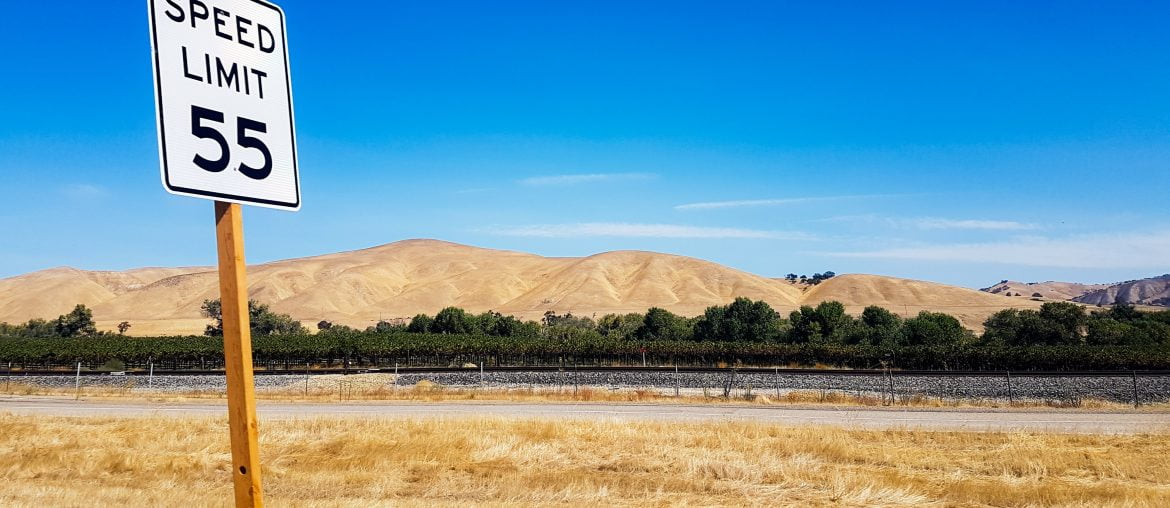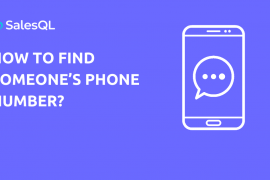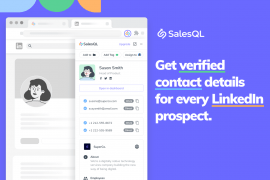Many people don’t know that LinkedIn has certain limits, which restrict your activity on the platform.
These limits have been introduced to prevent ‘spamming’ and cynical usage. LinkedIn was intended to allow people to connect with their friends and colleagues, but over recent years the platform has become cluttered with pointless advertising messages and aimless mailshots.
LinkedIn simply wants to ensure its users are behaving properly and contributing to the community. And at SalesQL, we fully support this message. The goal of our product is to enhance the community and maximize your sales or recruitment prospects, not encourage our subscribers to game the system.
However, we also want to give you the full facts about LinkedIn limits and ensure you don’t breach the platform’s usage conditions. Profiles viewed and enriched through SalesQL count towards the limits, so it’s important you know how to use our product properly.
SalesQL is an extremely well-established lead generation product. It is used by over 200,000 professionals in 189 countries.
In this post, we’re going to give you all the info you need to understand the LinkedIn limits and avoid penalties when running your lead-gen searches.
Before we get into the article, we want to make clear that our product is completely safe to use. Remember: SalesQL is an extremely well-established lead generation product. Over 200,000 professionals in 189 countries use SalesQL to streamline their sales and recruiting operations, automate their prospecting and pursue their outreach campaigns by social and email.

Ok, so what’s the ‘top line’ on LinkedIn limits?
LinkedIn imposes daily limits on several different kinds of activity. These include:
- Connection requests.
- Profile searches.
- Visualizations, or profile views.
For SalesQL users, these last two categories are most relevant, as they relate to the core function of our product.
We enable you to search and find profiles on LinkedIn (regardless of whether you have a connection) and enhance them by obtaining business data and contact details.
What’s more, we offer a bulk feature, which enables you to compile large numbers of business profiles at a time.
Table of Contents
What the LinkedIn limits are
Ok, here’s the frustrating part: LinkedIn doesn’t actually make its limits clear.
Rather than providing specific figures, the platform chooses to keep them private — perhaps because they worry that users will see these figures as targets.
However, what we do know is that:
1) LinkedIn limits are strict.
2) LinkedIn limits can differ from one user to the next.
Naturally, the limits can vary according to the type of account you have. However, they can also vary according to your activity on the platform.
This is particularly important for SalesQL users. If LinkedIn thinks you’re solely using the platform to recruit or gain leads, your limits are likely to be lower than those of a user who is enhancing the community and contributing in discussion (if you’re going to use the platform for recruitment or lead-gen purposes we strongly recommend upgrading to LinkedIn’s Premium account plans: LinkedIn Recruiter, Recruiter Lite or Sales Navigator).
SalesQL is also compatible with Recruiter, Recruiter Lite and Sales Navigator, which provide a higher number of profile searches and views.
What happens if I exceed LinkedIn’s limits?
LinkedIn is likely to impose restrictions on your account if you go over the daily limits. This could take one of two forms:
1. If you simply exceed LinkedIn’s “Commercial Use Limit” (without any additional malpractice)
If you exceed LinkedIn’s commercial use limit but your usage is otherwise normal, you are likely to have your LinkedIn account limited. This is because LinkedIn will assume you are using a Free LinkedIn account for commercial purposes (such as hiring or prospecting).
In this case certain privileges may be removed, such as:
- You won’t be able to view the full profiles of your target contacts.
- The search engine will only show you a certain number of people.
- You won’t be able to view more than a certain number of people in a company.
- Your invitation limit will be further capped, below the standard daily limit.
However, you will still be able to use LinkedIn and, after a certain period of time, your normal settings will be restored (your number of used searches resets at midnight PST on the 1st of each calendar month).
If you wish to remove this problem immediately, you can purchase a paid LinkedIn subscription. There are various options available, including Premium, Business, Recruiter Lite and Sales Navigator.
2. If you exceed the limits with additional malpractice (such as using LinkedIn automation tools irresponsibly).
LinkedIn is likely to view this as a more serious case and may suspend your account temporarily. In certain cases, your account may even be blocked permanently.
Here are some examples of conduct that could be seen as malpractice:
- An unusually high number of page views from the same account.
- A profile name that violates the terms of the LinkedIn user agreement.
- A history of repetitive, abusive behavior on the account.
- A security breach, detected by LinkedIn.
You can find more information on LinkedIn Help Center, including how to appeal any punitive action from LinkedIn.
How do I avoid these restrictions?
First of all (and apologies if this is stating the obvious), you need to use the platform sensibly.
This means you should only approach prospective contacts who can actually enhance your network and don’t send random invites simply to get more connections. If you behave sensibly, LinkedIn is less likely to flag you as a ‘cynical’ user.
The platform has identified a number of specific actions that are likely to be flagged as suspicious if you keep performing them. These include:
- Viewing a large number of profiles beyond your first-degree connections.
- Searching an entire company at length, looking for all the employees within it.
- Conducting third-degree people searches.
When running your searches, you should keep these red flags in mind. Don’t include too many third parties in your searches, and when searching companies, stay focused: don’t just include every single person within the organization (you’ll also enhance your chances of success within that company by limiting your campaign to the key decision-making).
As well as avoiding negative behaviors, you can also create a positive impression by being a ‘good citizen’: in other words, contributing actively and unselfishly to the LinkedIn community.

LinkedIn has introduced changes to its algorithm that prioritize user activity. What this means in practice is that, if you actively participate and create content, the algorithm will pick up on this and you’re less likely to be identified as a suspect user. In fact, your daily limits may even be increased.
In this context, we recommend you pursue a strategy known as ‘LinkedIn account warm-up’. Essentially, this involves taking the time to configure your account and provide as much detail as possible, so you gradually grow your presence on LinkedIn.
For example, it is advisable to:
- Keep your personal details constantly updated.
- Provide an extensive summary of your business or company position.
- Contribute to the community by writing your own posts and liking those of others.
- Comment on other people’s posts.
- Publish and forward relevant articles, guides, and blog posts.
- Provide and seek recommendations.
You can also check out our post about connection request limit hacks.
How can I stay within the LinkedIn Limits when using SalesQL?
As mentioned at the top, searches and visualizations carried out through SalesQL count towards your LinkedIn Limits: in other words, they aren’t hidden or separate.
However, you won’t incur any penalties if you use SalesQL responsibly, making each search efficient and relevant.
If you run endless searches and keep adding new contacts with SalesQL every day, there’s a good chance that you will eventually infringe the LinkedIn restrictions. But if you limit your searches to specific, highly targeted individuals, you will be fine.
It’s important to return to the point about bulk visualizations here. Our bulk searches go through as many profile pages as the user requests and visit all the profiles on each page to get their contact details.
If, for example, you request a search of eight pages, the bulk query will perform a search of each page and visualize all the profiles it finds. LinkedIn typically visualizes a total of 10 profiles a page, which means the bulk query will bring up a total of 80 profiles.
So it’s easy to see how you can rack up a huge number of searches and profile views with these mass searches, and overshoot the LinkedIn limits very quickly. With this in mind, we recommend you use your bulk searches sparingly: don’t just use them because they’re there. Individual searches should be your primary goal when using our platform.
Finally, we strongly discourage you from installing other extensions that perform the same role as SalesQL. They are likely to bring up even more profile views and push you even closer to the LinkedIn limits.
What’s more, many of these extensions automate key functions and perform several functions at once – searching, visualizing, and making connection requests. Automated tools from trusted companies are not a problem in themselves, but the abuse of these products – in other words, their intensive and repetitive use – may be flagged by LinkedIn and penalized.
Remember: whether you use SalesQL or any other well-known similar lead-generation tool, you control whether you stay within the limits.
LinkedIn’s limits are based on the behavior of its users: the limits rise and fall depending on this activity.
So the more responsibly you use the platform, the less likely you are to approach the limits.
Still got questions?
We offer a comprehensive support center, so if you have any questions relating to LinkedIn limits, we’d be happy to help.
*Cover Photo by Ludovic Charlet on Unsplash







